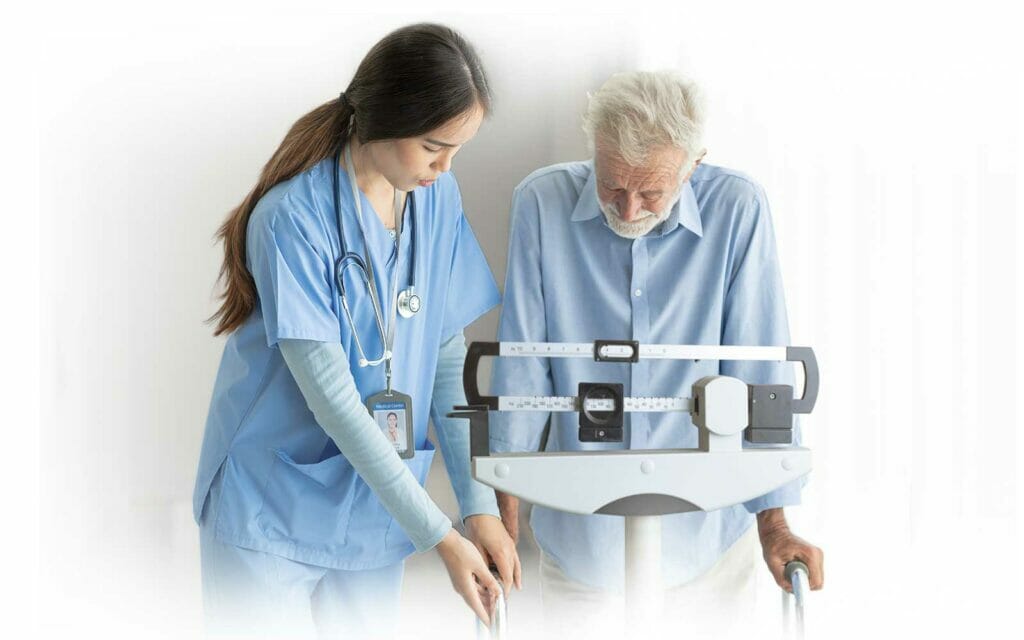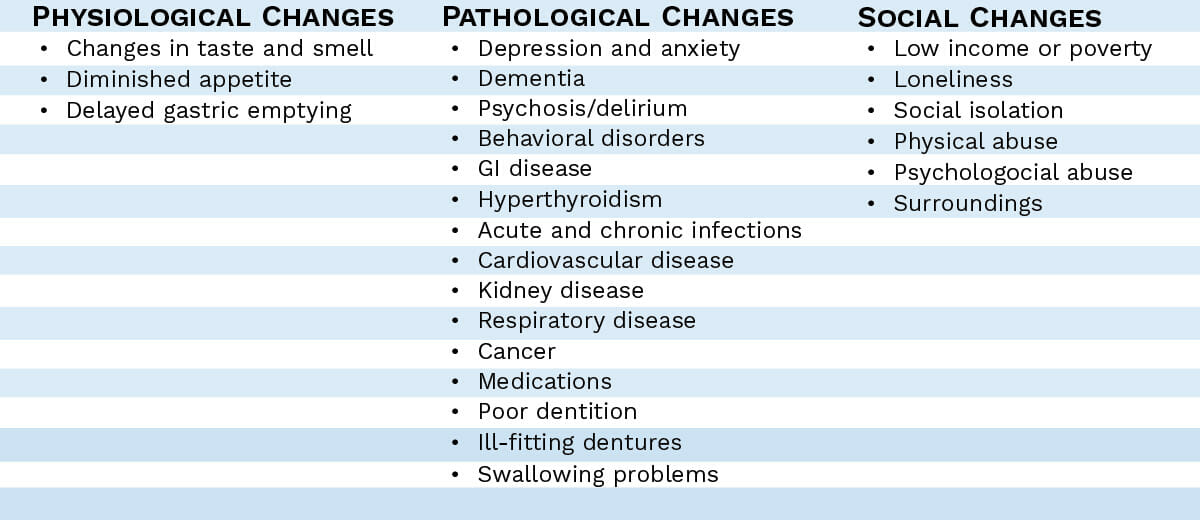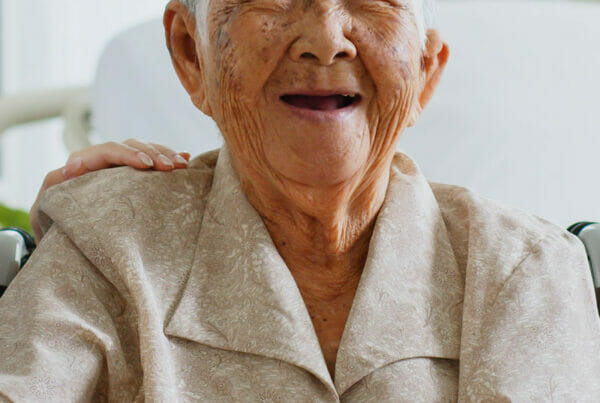Unintentional weight loss in the elderly can happen for a variety of reasons. When no cause can be identified, the loss may simply be part of the body’s natural process of preparing for life’s final journey. Hospice can provide comfort and support in these cases.
Food plays an essential part in our lives. Not only does it fulfil the emotional need of providing care and nurture, but food also provides the energy we need for our bodies to function. As we eat, we break down food into energy which we call calories. Our bodies use the calories we eat to build and repair tissue. We store excess calories within our tissues, usually in the form of fatty tissue known as adipose, that can be broken down and used to meet our energy requirements when we do not provide sufficient nutrition.
The benefits of weight loss are well known. But did you know that weight loss is different for the elderly? For most adults, the ideal range for a person’s body mass index (BMI) is between 18.5 and 24.9 kg/m2. But for older adults, studies have shown that having a higher BMI between 24 and 29 kg/m2 provides the lowest risk of death.
What Do We Know About Weight Loss in the Elderly?
Weight loss in the elderly tends to follow a three part curve. The first part of the curve is a period of weight stability or even weight gain. Total body weight generally peaks around the age of 60. After the age of 70, most people will see small decreases in weight in the range of 0.2 to 0.4 pounds per year. This is the second section of the curve where we see a period of mild weight loss, relative to the normal aging process.
Why does this happen? As we age, we experience a reduced drive to eat because our bodies need less energy to function. The reasons we need less energy include a decline in physical activity and a decreased resting metabolic rate. As we age, our body’s inhibitory satiety signals also become more potent. Food also loses some of the appeal it had when we were younger. Essentially, the elderly aren’t as hungry as you or me and when they do eat, they tend to get fuller faster.
The last part is a period of accelerated weight loss prior to death. Losing 5% to 10% of one’s body weight within a 12 month period or even a 10% loss over an extended period (5 to 10 years) is considered accelerated and is not considered a part of the normal aging process. It is usually indicative of a problem and can even occur several years prior to death.
What are the Consequences of Unintentional Weight Loss?
Besides putting them at an increased risk of death as mentioned above, unintentional weight loss can have several serious side effects, including:
- Decline in activities of daily living
- Increased in-hospital morbidity
- Increased risk of hip fractures in women
- Failure to respond to medical treatments
- Weakened or impaired muscle function
- Frailty as seen by weakness, slowing, or decreased energy
- Increased infections
- Falls
- Poor wound healing
Most Common Causes of Unintentional Weight Loss
In general, there are three categories of causes for weight loss in the elderly. These include physiological changes, or changes that occur within our body. There are pathological changes, or changes that are cause by some sort of external force, usually from some form of disease. Changes to our social status can also contribute to weight loss. Check out the list below to learn more!
 Why Do We Worry About Weight Loss in the Elderly?
Why Do We Worry About Weight Loss in the Elderly?
As you can see, unintentional weight loss is often associated with a pathological change in a person. In other words, a disease often first manifests in a person in the form of weight loss. It helps us know that something is wrong. If a physical cause exists, it usually becomes evident within 6 months, hopefully allowing us enough time to diagnosis and correct the cause.
Unfortunately for up to 30% of the population, unintentional weight loss does not have an identifiable cause. In these cases, the weight loss may simply be part of the body’s natural process of preparing for death. In fact, one of the main indicators for hospice services is the evidence of unintentional weight loss. This is documented as a loss of 5 to 10% over the past 6 to 12 months, decreasing body measurements like abdominal girth, or can be due to trouble swallowing to an extent that food intake is decreased.
Questions to Ask Yourself?
So how do you know when to be concerned? Try asking yourself the following questions.
- Are you concerned with either your or your loved one’s weight loss?
- Have you or a loved one experienced a decreased appetite?
- Are you or a loved one having a hard time swallowing?
- Have you or your loved one had difficulty eating due to your disease progression?
- Are you or your loved one struggling to maintain a healthy weight despite your best efforts?
- Have you or your loved one lost more than 5% of their body weight over the past year?
If you answered yes to any of the above questions, don’t wait. Too often we attribute weight loss to our own efforts. But as you’ve read, unintentional weight loss usually indicates the presence of disease or that the end of life is drawing near. Now is the time to talk to someone about that weight loss.
Why Choose Active Hospice?
Ignoring any unintentional weight loss can leave you and your family unprepared to face life’s final journey. Active Hospice provides support for all members of the family as they adjust to end of life care. We promise to give you and your loved ones the control, quality, and comfort that you deserve during life’s last moments. Give us a call today to schedule your free, in-home consultation and see how we can actively serve you through life’s final journey.

 Why Do We Worry About Weight Loss in the Elderly?
Why Do We Worry About Weight Loss in the Elderly?

